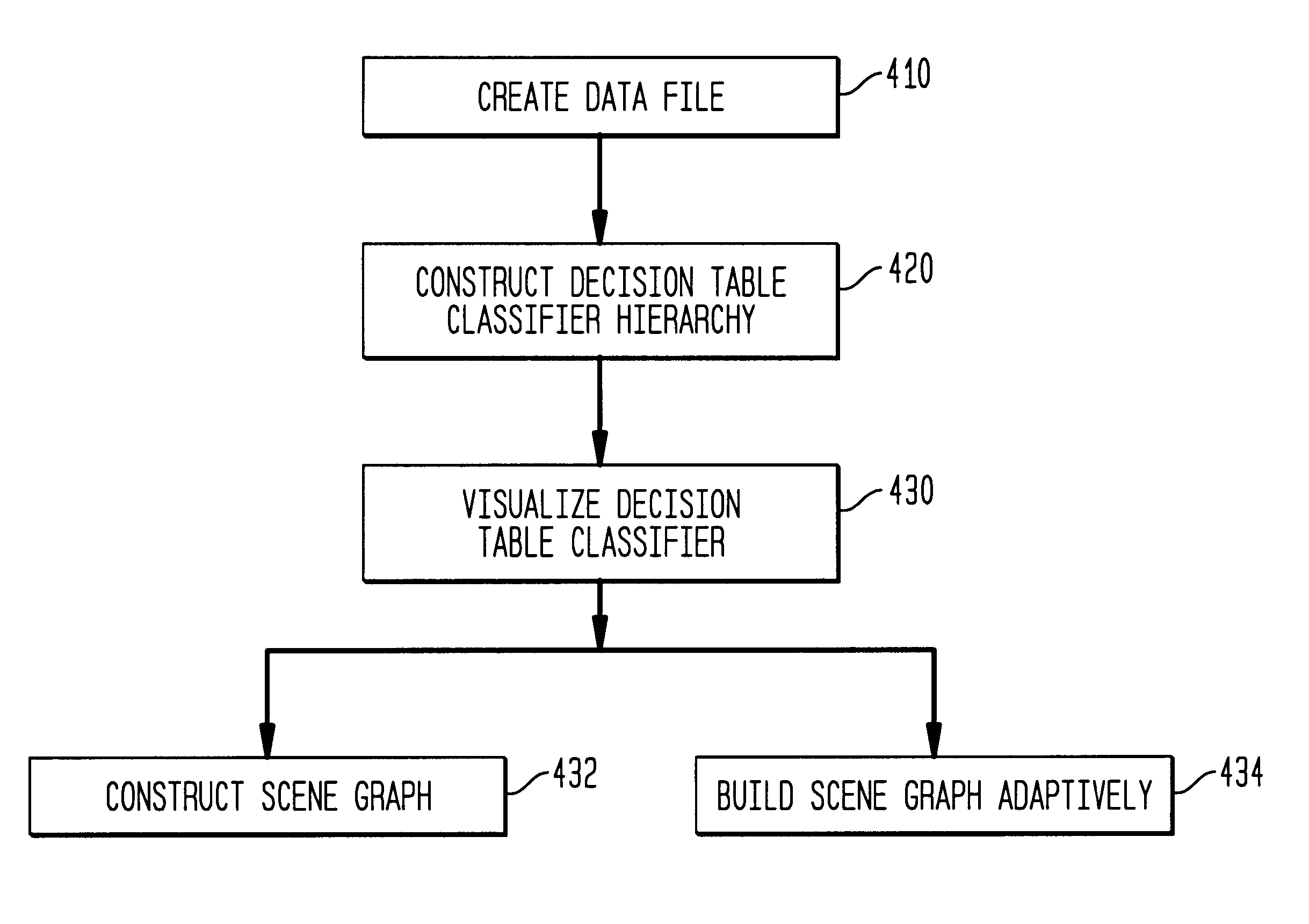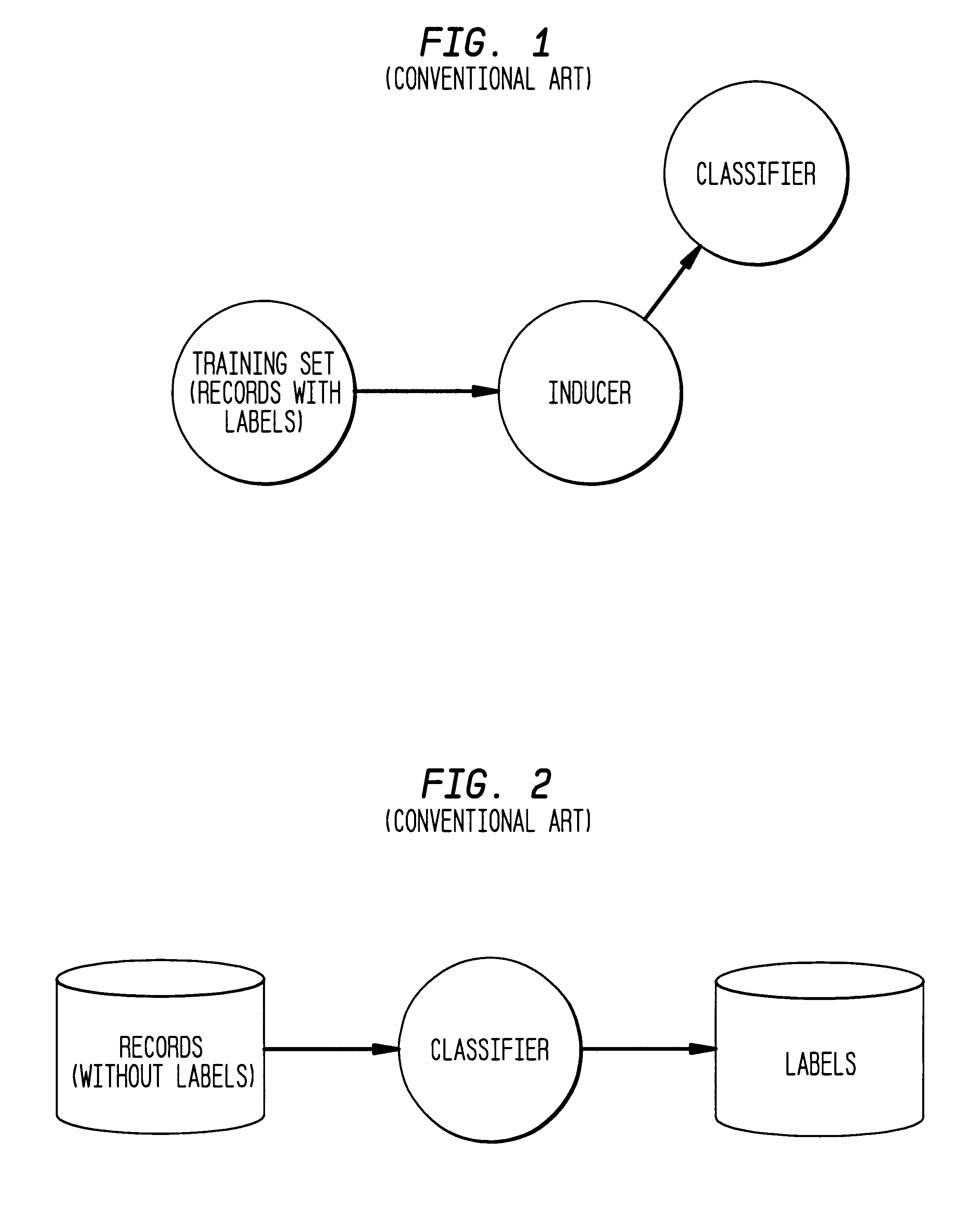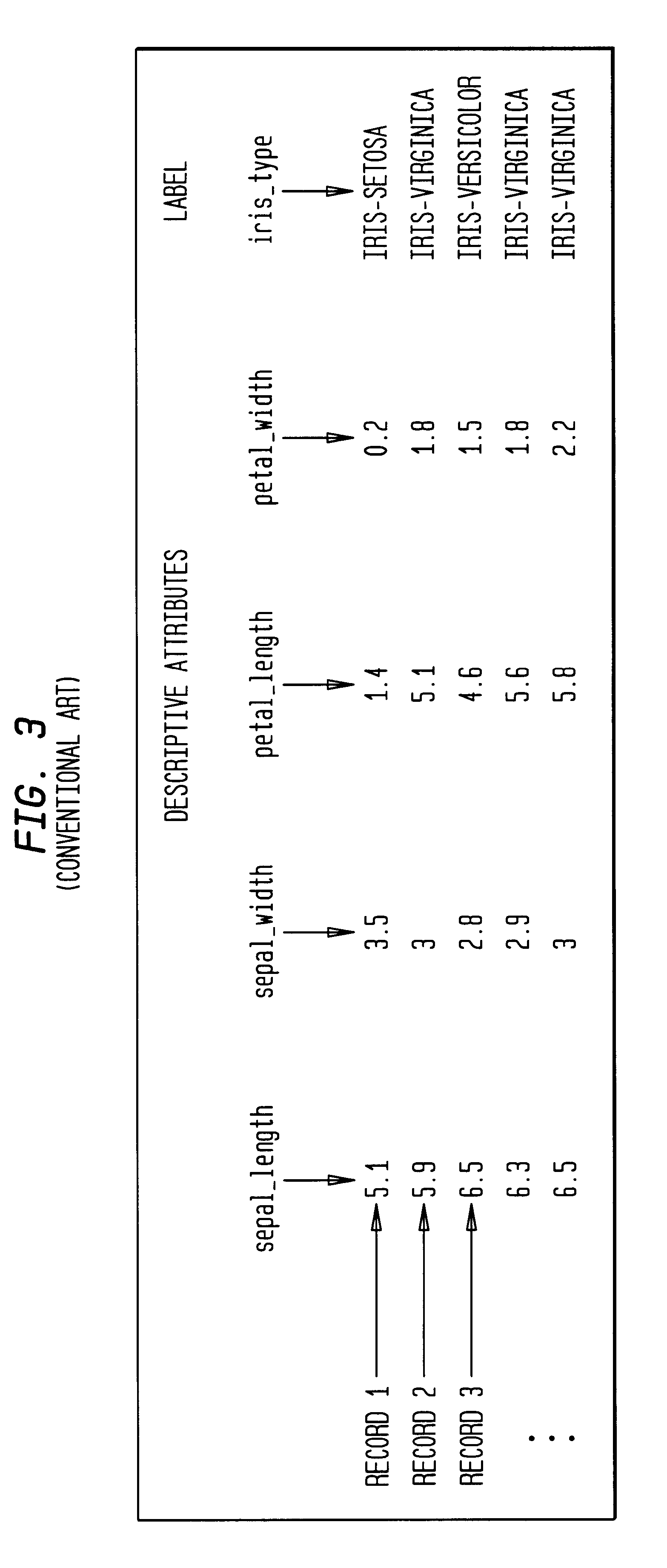Method, system, and computer program product for visualizing a data structure
- Summary
- Abstract
- Description
- Claims
- Application Information
AI Technical Summary
Problems solved by technology
Method used
Image
Examples
example 2
B. Salary Factors
For a data set of working adults, a user may choose the following query: what factors affect salary. Using the method of the present invention, a user can first bin gross_income into two bins, those that earn less that 50,000, and those earning over 50,000. Then, the user can run a MineSet.TM. classifier to help determine what factors influence salary. The file / usr / lib / MineSet / dtabviz / examples / adult-salary-dtab.dtableviz shows the decision table classifier induced for this query. This file was generated by running the inducer on / usr / lib / MineSet / data / adult.schema with gross_income divided into five bins using user-specified thresholds.
Since the "salary" label is numeric, a continuous spectrum is used to assign colors to each class. Also the classes in the probability pane on the right are not sorted by slice size because they have a numeric order. A color, such as red can be assigned to the highest bin (50,000+).
The two attributes chosen at the top level of the de...
example 3
C. Breast Cancer Diagnosis
The breast cancer data set contains information about females undergoing breast cancer diagnosis. Each record represents a patient with attributes such as cell size, lump thickness, and marginal adhesion. The query (label) is whether the diagnosis is malignant or benign. The file / usr / lib / MineSet / dtableviz / examples / breast-dtab.diableviz shows the structure of the Decision Table Classifier induced for this problem. This file was generated by running the inducer on / usr / lib / MineSet / data / breast.schema.
In the decision table classifier visualizer, mitosis and uniformity of cell shape are shown at the top of the decision table hierarchy. If both attributes have low values at the same time the given sample is 99% likely to be benign. On the other hand, 100% of the training records that had high values for both, were malignant.
When a user drills-down on the four cake, that are ambiguous, the attributes marginal adhesion and bare-nuclei are used to discriminate. Th...
PUM
 Login to View More
Login to View More Abstract
Description
Claims
Application Information
 Login to View More
Login to View More - R&D
- Intellectual Property
- Life Sciences
- Materials
- Tech Scout
- Unparalleled Data Quality
- Higher Quality Content
- 60% Fewer Hallucinations
Browse by: Latest US Patents, China's latest patents, Technical Efficacy Thesaurus, Application Domain, Technology Topic, Popular Technical Reports.
© 2025 PatSnap. All rights reserved.Legal|Privacy policy|Modern Slavery Act Transparency Statement|Sitemap|About US| Contact US: help@patsnap.com



